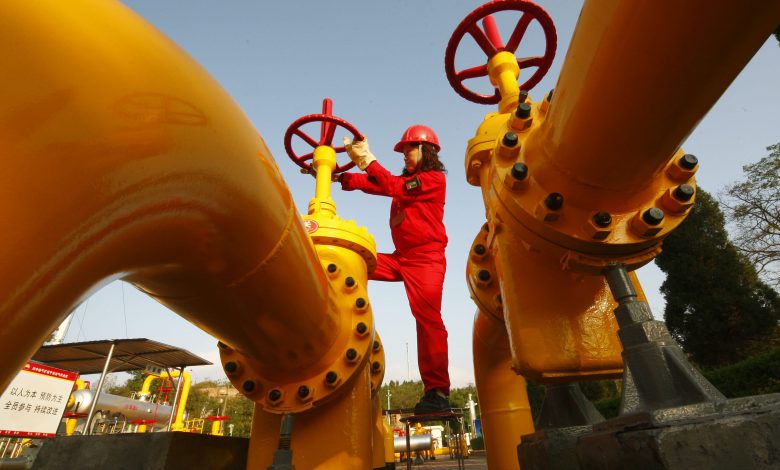Global oil demand outlook from the IEA

[ad_1]
A Chinese worker checks the valve of a gas pipe at a natural gas plant in Suining, in southwest China’s Sichuan province.
STR | AFP | Getty Images
Global oil demand is now expected to see its first quarterly contraction in over a decade, according to the International Energy Agency (IEA), as the new coronavirus and widespread shutdown of China’s economy hits demand for crude.
Demand is now expected to fall by 435,000 barrels a day (b/d) in the first quarter of 2020, down from the same period a year ago, and marking the first quarterly contraction in more than 10 years, the IEA said in its monthly oil market report Thursday.
The expected decline in demand prompted the agency to cut its 2020 growth forecast by 365,000 b/d to 825,000 barrels a day, the lowest since 2011. Lower-than-expected consumption in the OECD countries trimmed 2019 growth to 885,000 b/d, it also said.
The forecast downgrade comes as the coronavirus, which has infected over 59,000 worldwide and killed over 1,300 people, continues to weigh on global market sentiment and China’s economic activity with factories and businesses closing and travel restricted both to and from China and within the country.
The outbreak has also affected business elsewhere with economic forums and business conferences cancelled, the latest being the Mobile World Congress that was set to take place in Barcelona this month.
The World Health Organization has said the outbreak “holds a very great threat for the world” and the International Monetary Fund’s Managing Director Kristalina Georgieva told CNBC Wednesday the new strain of coronavirus was “clearly more impactful” on the world economy than the 2002-2003 SARS epidemic.
The negative impact on oil demand hit oil prices hard as the virus took hold in January with a barrel of Brent crude falling by around $10 to fetch below $55 a barrel.
But prices have risen this week on expectations that major producers OPEC and non-OPEC producers, led by Russia, could cut global oil output further to counteract the slump in demand (a slump that had already been around before the coronavirus due to the trade war between the U.S. and China).
On Thursday, benchmark Brent crude was trading at $55.73 per barrel, while U.S. West Texas Intermediate (WTI) was trading at $51.21 per barrel.
The consequences of the new coronavirus, known now as “Covid-19,” will be “significant” for global oil demand, oil prices and producers, the IEA said Thursday.
“From the point of view of the producers, before the Covid-19 crisis the market was expected to move towards balance in the second half of 2020 due to a combination of the production cuts implemented at the start of the year, stronger demand and a tailing off of non-OPEC supply growth. Now, the risk posed by the Covid-19 crisis has prompted the OPEC+ countries to consider an additional cut to oil production,” it said.
Last week, the technical committee of the 14-member producer group OPEC, led by Saudi Arabia, and its non-member allies led by Russia (an alliance known as OPEC+) recommended an output cut of 600,000 barrels per day, in addition to its current 1.7 million bpd reduction. Crucially, however, Russia has not yet signaled if it will support a deeper cut.
In its own monthly oil market outlook on Wednesday, OPEC also dramatically lowered its forecast for oil demand growth this year, citing the coronavirus outbreak as the “major factor” behind its decision. It revised its outlook for global oil demand growth downwards to 0.99 million barrels per day (bpd) in 2020, down by 0.23 million bpd from the previous month’s estimate.
Source link







